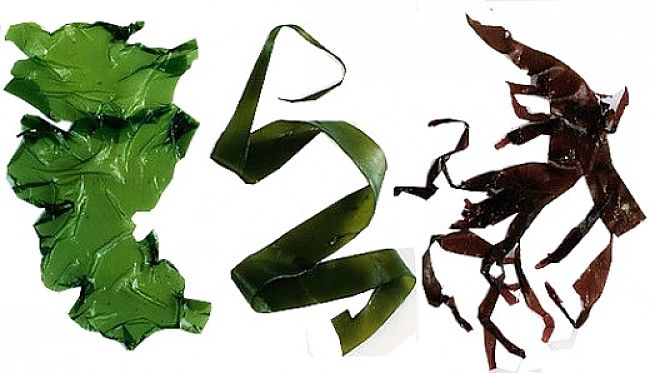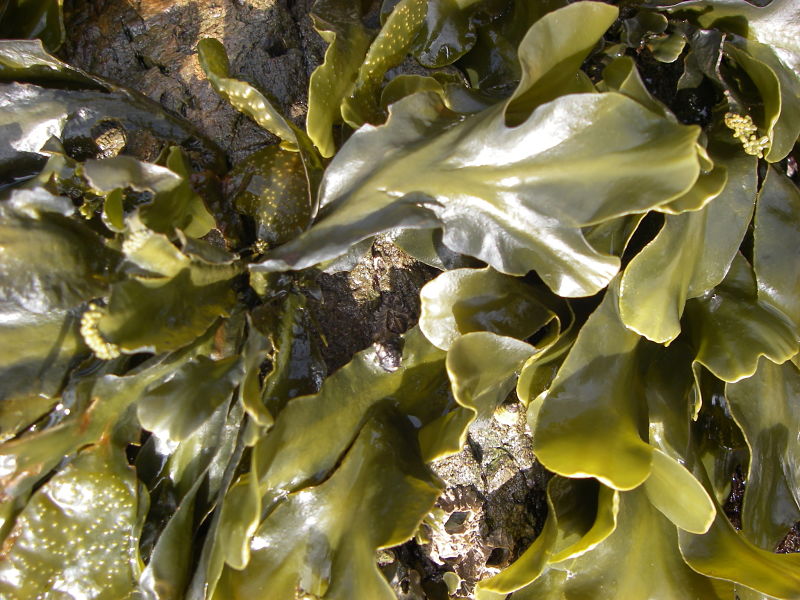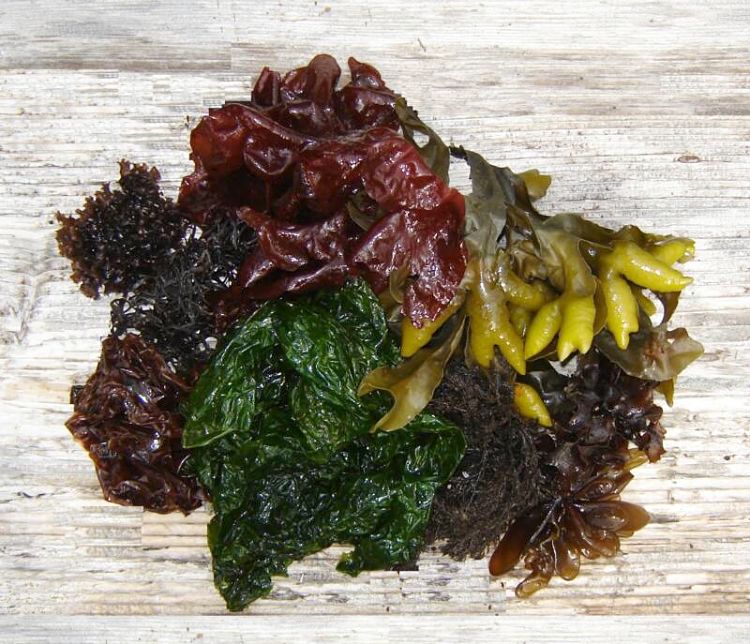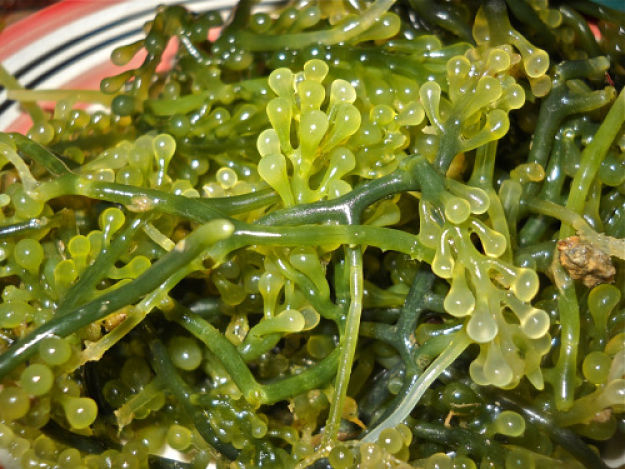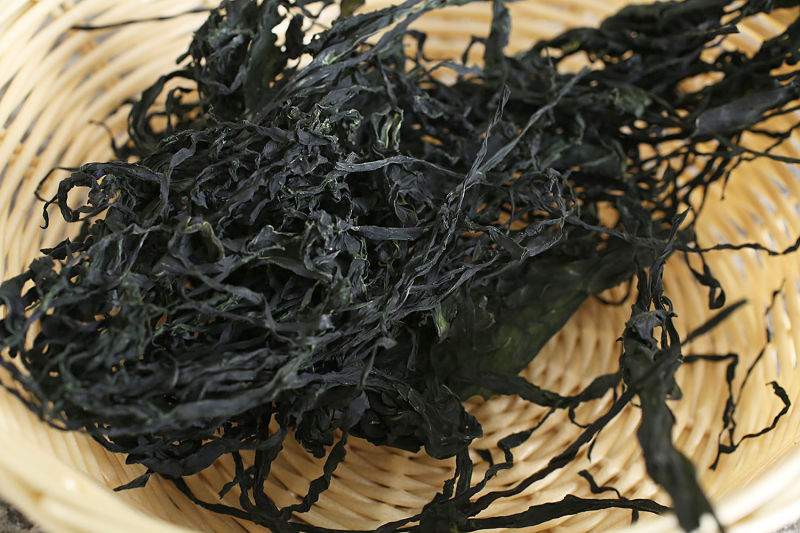Health Benefits Seaweed - Nutrition Facts, Benefits and Uses
Seaweed has been part of traditional diet of coastal communities in East Asia, particularly China, Japan and Korea for centuries. It is increasingly being used in Europe, America and Australia because of the health benefits of seaweed showcases by the nutrition facts and variety of uses.
But just how healthy is seaweed compared with other green vegetables?
Seaweed is also a source of food hydrocolloids, such as agar and alginates that are widely used to enhance the appearance, texture, feel of many processed dairy foods, sauces and desserts to thickening them and add creaminess.
Agar is a vegetarian gelling agent used substitute for gelatine which is made from animal bones. Many vegans eat gelatine in medicine capsules and in foods without realising it.
Seaweed is rich in dietary fiber, omega-3 fatty acids, essential amino acids, and vitamins A, C, B and E.
While it is mostly used in Asian dishes, such as sushi, it is increasingly being used in a wide variety of recipes as a substitute for other green vegetables.
Seaweed can be crumbled over rice, baked potatoes and salads, used in stir fries, or added to soups, stock, beans and stews.
This article outlines the health benefits of commonly available seaweeds and provides a chart of the nutrition chart in comparison with other vegetables: Spinach and Iceberg Lettuce.
For additional information see: Seaweed Facts and Figures You Need to Know
Types of Seaweed Used for Foods
There are many thousands of varieties of seaweed, many of which are edible, but consumers should beware that seaweeds can accumulate toxins from polluted waters such as arsenic and heavy metals and so it is best to stick to the commercial varieties.
Nori is perhaps the most commonly eaten red seaweed, that is used to wrap sushi in Japan and Asian countries.This seaweed is also known as 'laver' in Wales and 'sloke' in Scotland, and in other parts of Great Britain where it was traditionally made into flat breads.
Kombu and wakame are other types of brown seaweed that are widely used in Asian countries for flavoring soups and stews. Fresh green seaweeds like sea grass and sea lettuce can be collected locally and eaten raw in salads or added to stews and soups.
Other seaweeds used in foods include wrack, hijiki, sea spaghetti and dulse. Spirolina is a microalga that is cultured commercially and is consumed by animals and humans, usually as a nutritional supplement.
Irish Moss (Chondrus crispus), also known as Carrageen moss grows all along the Atlantic coast of Europe and North America and can be used fresh, but is commonly available in a dry form. Irish moss is used in bulk by the food industry in jellies, ice creams, deserts, savory foods and various baked goods and flans.
The table below summarizes the nutrition data for a variety of seafood. For comparison, the nutrient data for spinach and lettuce (Iceberg) is lso shown.
Health Benefits of Seafood and Nutrition Data
Minerals - Seaweed absorbs minerals from the ocean and consequently, it is relatively rich in many trace elements and minerals. Beware that seaweeds grown in polluted water can accumulate toxins such as arsenic and heavy minerals and so always check where the seafood comes from. Seaweeds are a fabulous source of iron and calcium. A small portion of dried kombu (only 8 g ) yields provides more calcium than a cup of milk, and a similar amount of dulse contains more iron than a 100 g sirloin steak (although it is non-heme iron and may not be absorbed efficiently). Seaweeds have more iron that spinach which is often promoted for its iron content. It is also rich in Magnesium, Phosphorus, Iodine, Zinc and Copper (see the table).
Fiber - Seaweeds are very rich in soluble fibers such as agar, alginates and carrageenan, which are not digested in the gut and so help to create a sense of fullness and satiety which is beneficial for people trying to lose weight. A small 8 g portion of dried seaweed provides about 20% of the recommended daily allowance for fiber, equivalent to the amount or fiber in a medium banana.
Fats - Seaweed contains tiny amounts of fat, lower than in spinach and lettuce which are themselves very low.
Proteins - Nori seaweed ( used as sushi wraps) are relatively rich in protein with 6 g per 100g.
Vitamins - Seaweeds are relatively rich in Vitamins A, K, C and E but with values less than in spinach. There are also good values for B group vitamins such as riboflavin, niacin and folate.
The different varieties of seaweed have different nutrient levels:
- Nori seaweed has the highest amount of protein compared to the other types.
- Dulse is relative high in vitamins B6 and B12.
- Hijiki is high in fiver and calcium.
- Sea Lettuce is very high in iron.
- Wakame has the highest amount of calcium and folate.
Culinary Uses for Seaweeds
Stocks and Soups - Dried seaweed can be used to make a stock as the base for soups, stews and other recipes. Dried seaweed can also be added to soups such as miso as a garnish or flavoring.
Sushi - Nori seaweed sheets are generally sold as a dry product, but the seaweed can easily be reconstituted by soaking the required number of sheets in warm water for a few minutes. You can use the soften sheet as an outer sushi case for rolling a mixture of sushi rice, spices and raw fish and other ingredients.
Seaweed Powders - Dried seaweed can be ground into a fine powder and used as a spice to be added to various sauces and dishes. It has a salty flavor and provides a thickening function after absorbing water.
Topping and Garnishes - Dried seaweed makes an excellent topping or garnish for many dishes. Dried seaweed can be sprinkled onto the top of many dishes. Dried seaweed provides a little crunch to fish dishes.
Salads and Noodles - Dried Nori or Wakame sheets can be reconstituted, thinly sliced and added to pasta sauce, used in stir-fry dishes used as noodles paired with fresh vegetables and fish or can be used as a crunchy topping for a salad. Dried Wakame and Nori seaweed can be combined with Ramen noodles in salads.
Snacks - Nori sheets make an excellent snack by themselves. Fry the seaweed for 15 to 20 seconds on both sides, in a little sesame oil seconds and enjoy.
Nutrition Data For Seaweeds Comapred with Spinach and Lettuce
| Serving 100 g (raw) | Irish moss | Kelp | Laver (Nori) | Spirulina | Wakame | Spinach | Lettuce, Iceberg |
|---|---|---|---|---|---|---|---|
| Macronutrients | |||||||
| Calories (Cal) | 50 | 40 | 40 | 30 | 40 | 23 | 14 |
| Protein (g) | 1.5 | 1.7 | 5.8 | 5.9 | 3 | 2.87 | 0.89 |
| Total Fat (g) | 0.2 | 0.6 | 0.3 | 0.4 | 0.6 | 0.40 | 0.14 |
| Total Carbohydrates (g) | 12.3 | 9.6 | 5.1 | 2.4 | 9.1 | 3.63 | 2.96 |
| Dietary Fiber (g) | 1 | 1 | 0 | 1 | 2.33 | 1.23 | |
| Sugar (g) | 0.6 | 0.6 | 0.5 | 0.7 | 0.43 | 1.96 | |
| Vitamins | 0.00 | ||||||
| Vitamin C (mg) | 3 | 3 | 39 | 1 | 3 | 28.00 | 2.81 |
| Thiamin (mg) | 0.02 | 0.05 | 0.1 | 0.22 | 0.06 | 0.08 | 0.04 |
| Riboflavin (mg) | 0.47 | 0.15 | 0.45 | 0.34 | 0.23 | 0.19 | 0.02 |
| Niacin (mg) | 0.59 | 0.47 | 1.47 | 1.2 | 1.6 | 0.72 | 0.12 |
| Pantothenic Acid (mg) | 0.18 | 0.64 | 0.52 | 0.33 | 0.7 | 0.07 | 0.09 |
| Vitamin B6 (mg) | 0.07 | 0 | 0.16 | 0.03 | 0 | 0.20 | 0.04 |
| Folate (mcg) | 180 | 180 | 150 | 10 | 200 | 193.33 | 29.82 |
| Vitamin B12 (mcg) | 0 | 0 | 0 | 0 | 0 | 0.00 | 0.00 |
| Vitamin A (IU) | 120 | 120 | 5200 | 60 | 360 | 9376 | 502 |
| Vitamin E (mg) | 0.9 | 0.9 | 1 | 1 | 2.03 | 0.18 | |
| Vitamin K (mcg) | 5 | 66 | 4 | 5 | 483.00 | 24.04 | |
| Minerals | |||||||
| Calcium (mg) | 70 | 170 | 70 | 10 | 150 | 100.00 | 17.54 |
| Iron (mg) | 8.9 | 2.8 | 1.8 | 2.8 | 2.2 | 2.70 | 0.40 |
| Magnesium (mg) | 140 | 120 | 0 | 20 | 110 | 80.00 | 7.02 |
| Phosphorus (mg) | 160 | 40 | 60 | 10 | 80 | 50.00 | 19.30 |
| Potassium (mg) | 60 | 90 | 360 | 130 | 50 | 556.67 | 140.35 |
| Sodium (mg) | 70 | 230 | 50 | 100 | 870 | 80.00 | 10.53 |
| Zinc (mg) | 2 | 1.2 | 1 | 0.2 | 0.4 | 0.53 | 0.16 |
| Copper (mg) | 0.15 | 0.13 | 0.26 | 0.6 | 0.28 | 0.13 | 0.02 |
| Manganese (mg) | 0.37 | 0.2 | 0.99 | 0.19 | 1.4 | 0.90 | 0.12 |
| Selenium (mcg) | 1 | 1 | 1 | 1 | 1 | 1.00 | 0.18 |
| Fatty Acids | |||||||
| Saturated Fat (g) | 0.03 | 0.25 | 0.06 | 0.14 | 0.13 | 0.06 | 0.02 |
| Monounsaturated Fat (g) | 0.02 | 0.1 | 0.03 | 0.03 | 0.06 | 0.01 | 0.01 |
| Polyunsaturated Fat (g) | 0.06 | 0.05 | 0.11 | 0.11 | 0.22 | 0.17 | 0.07 |
